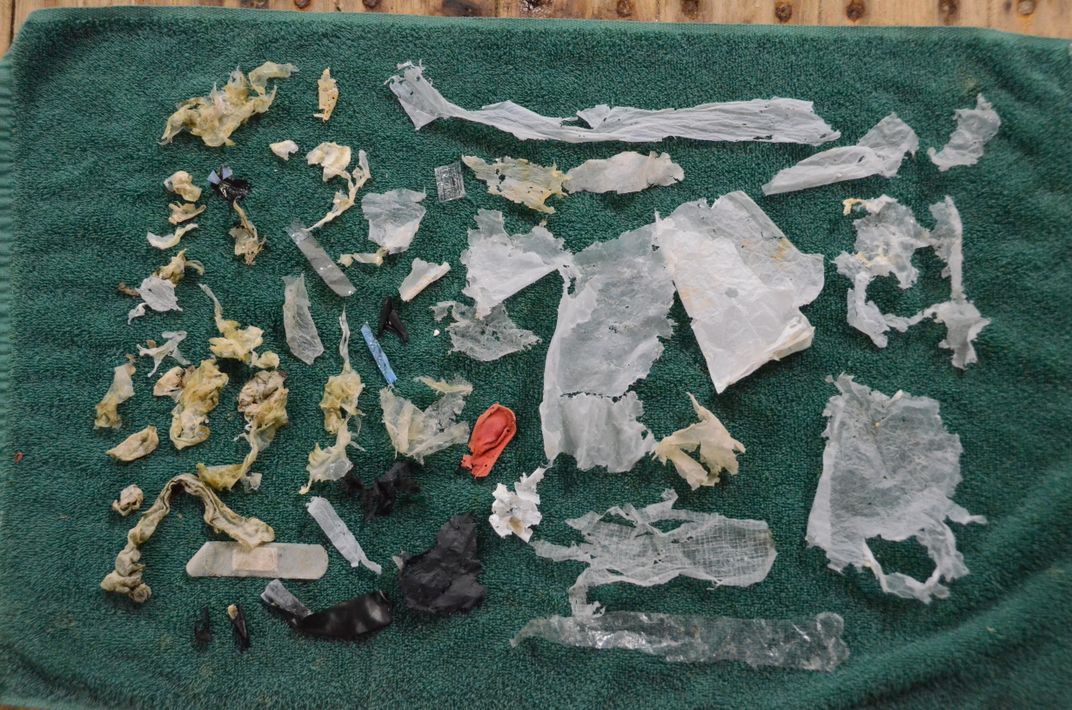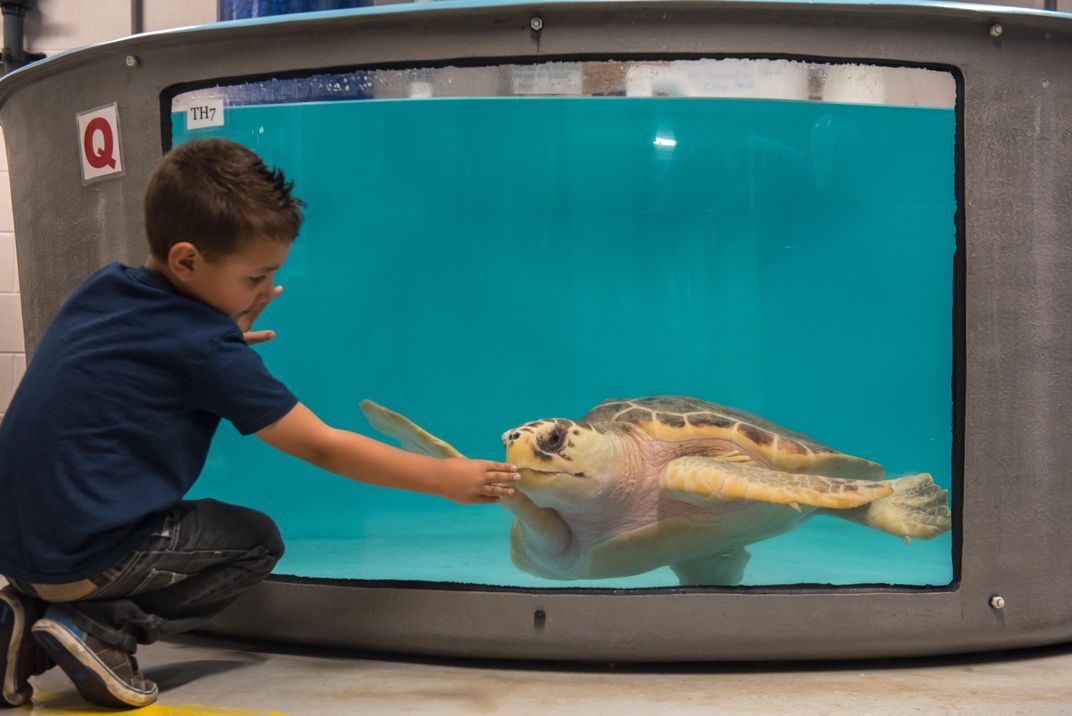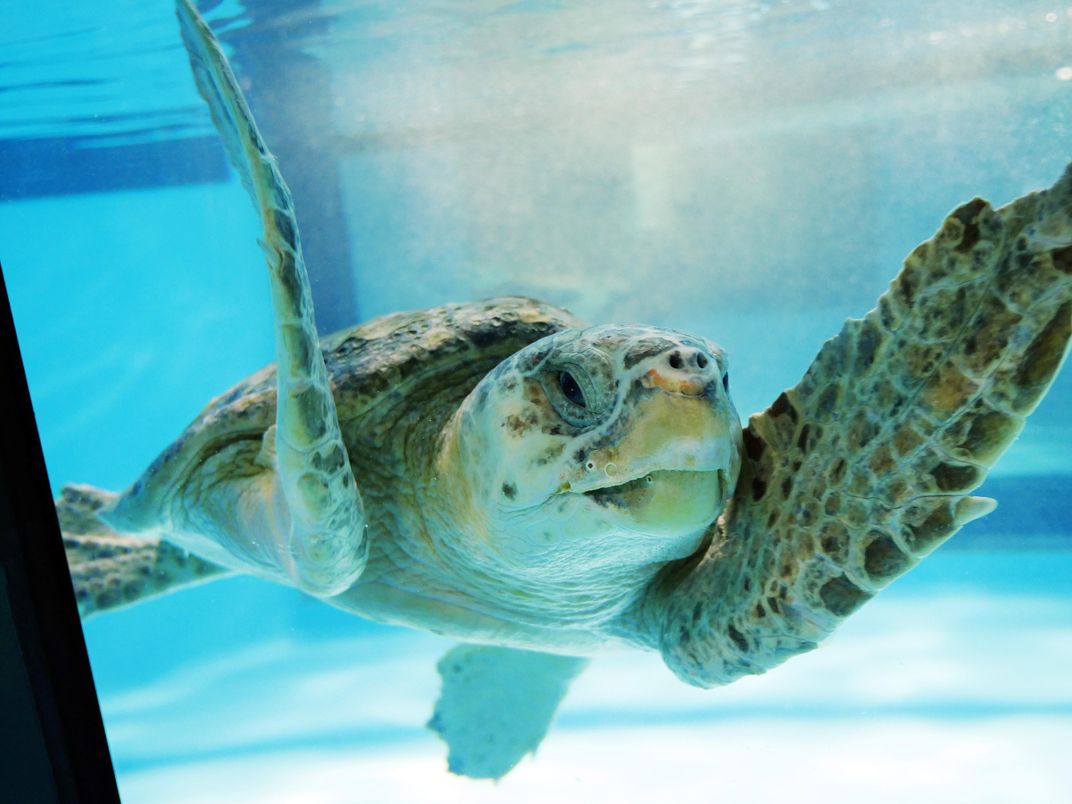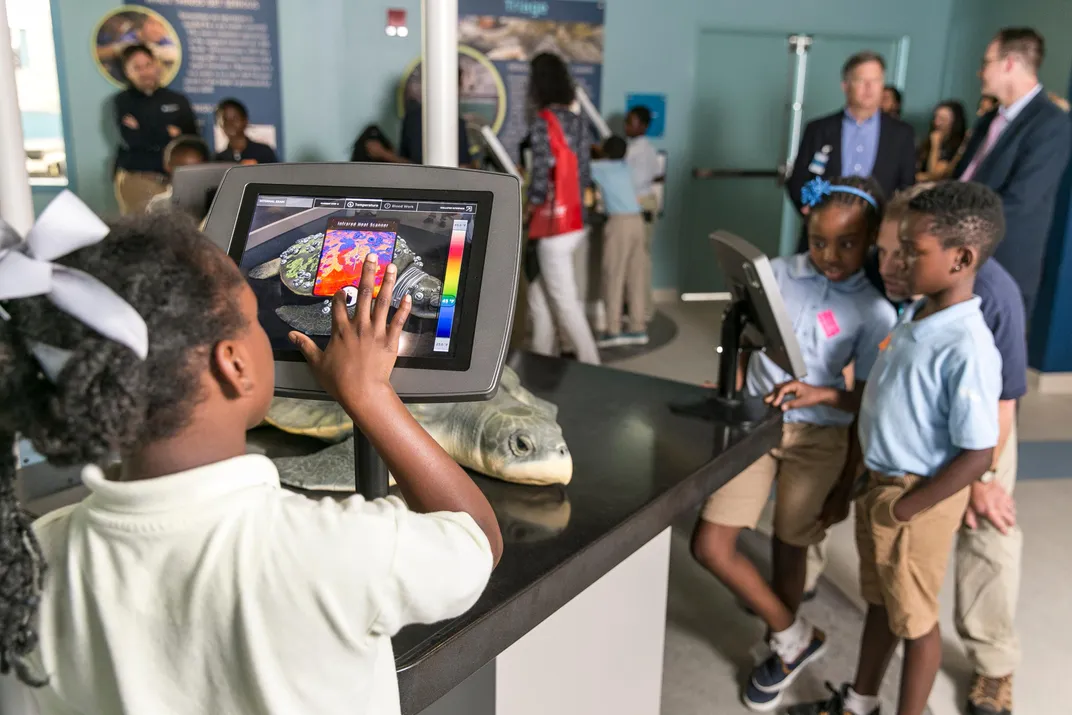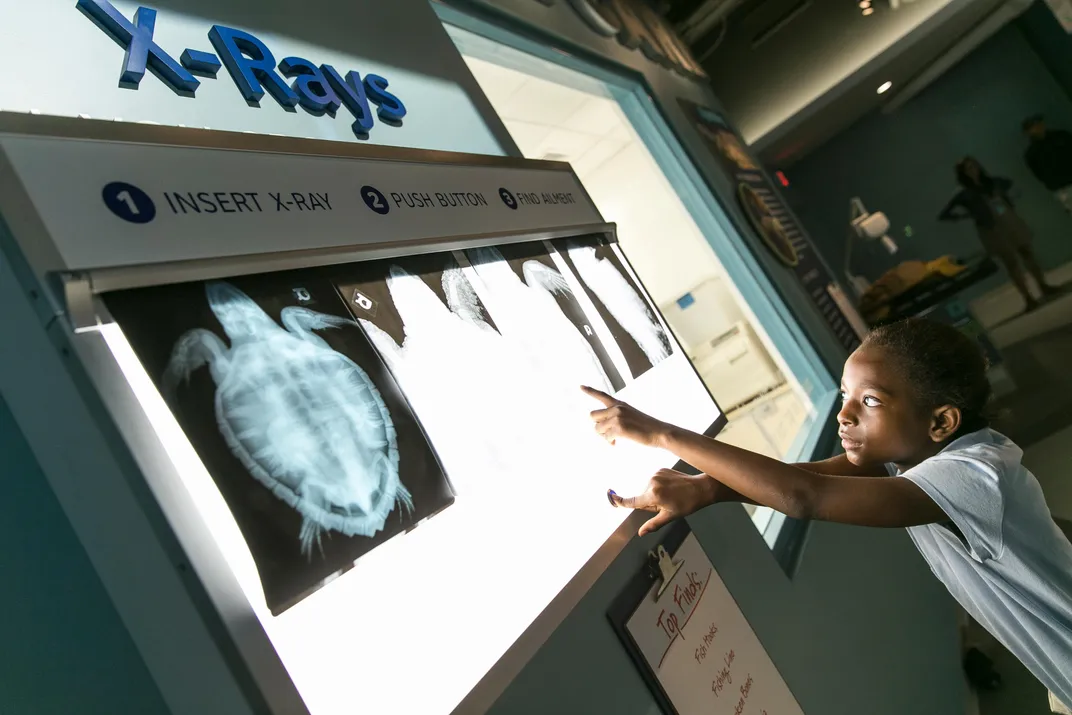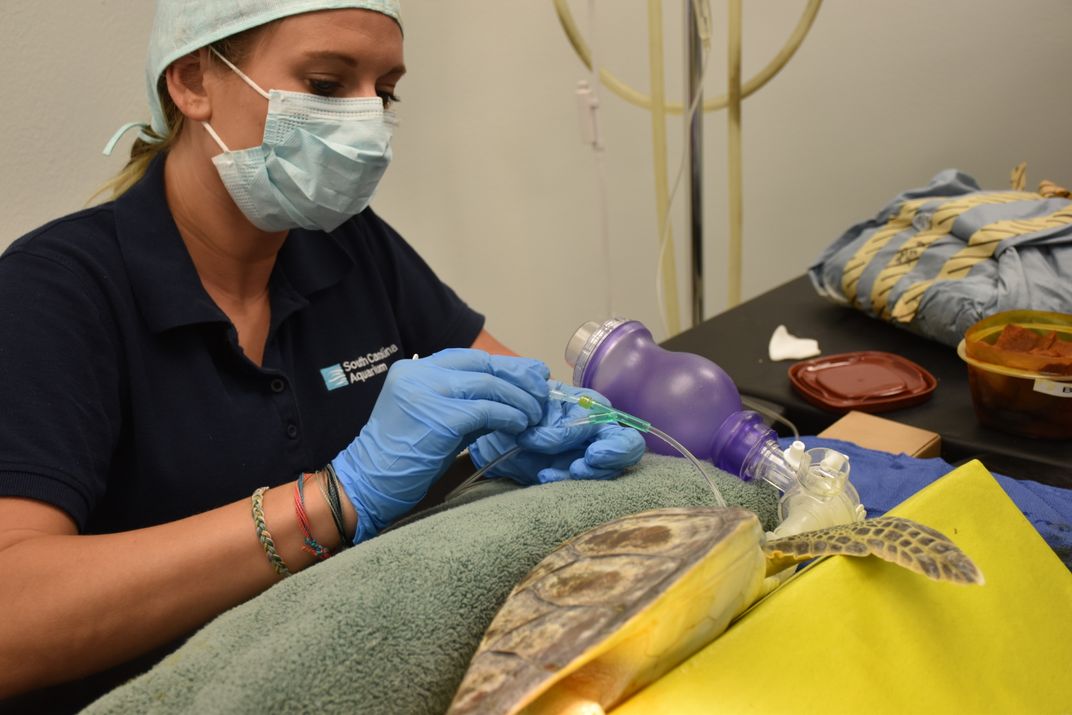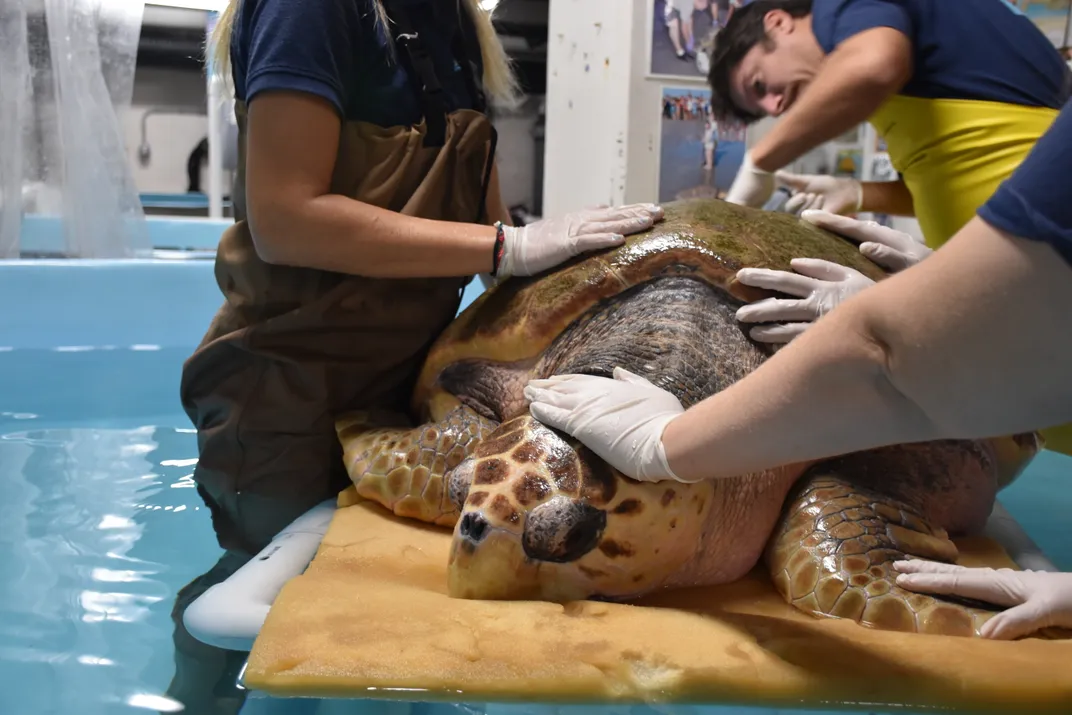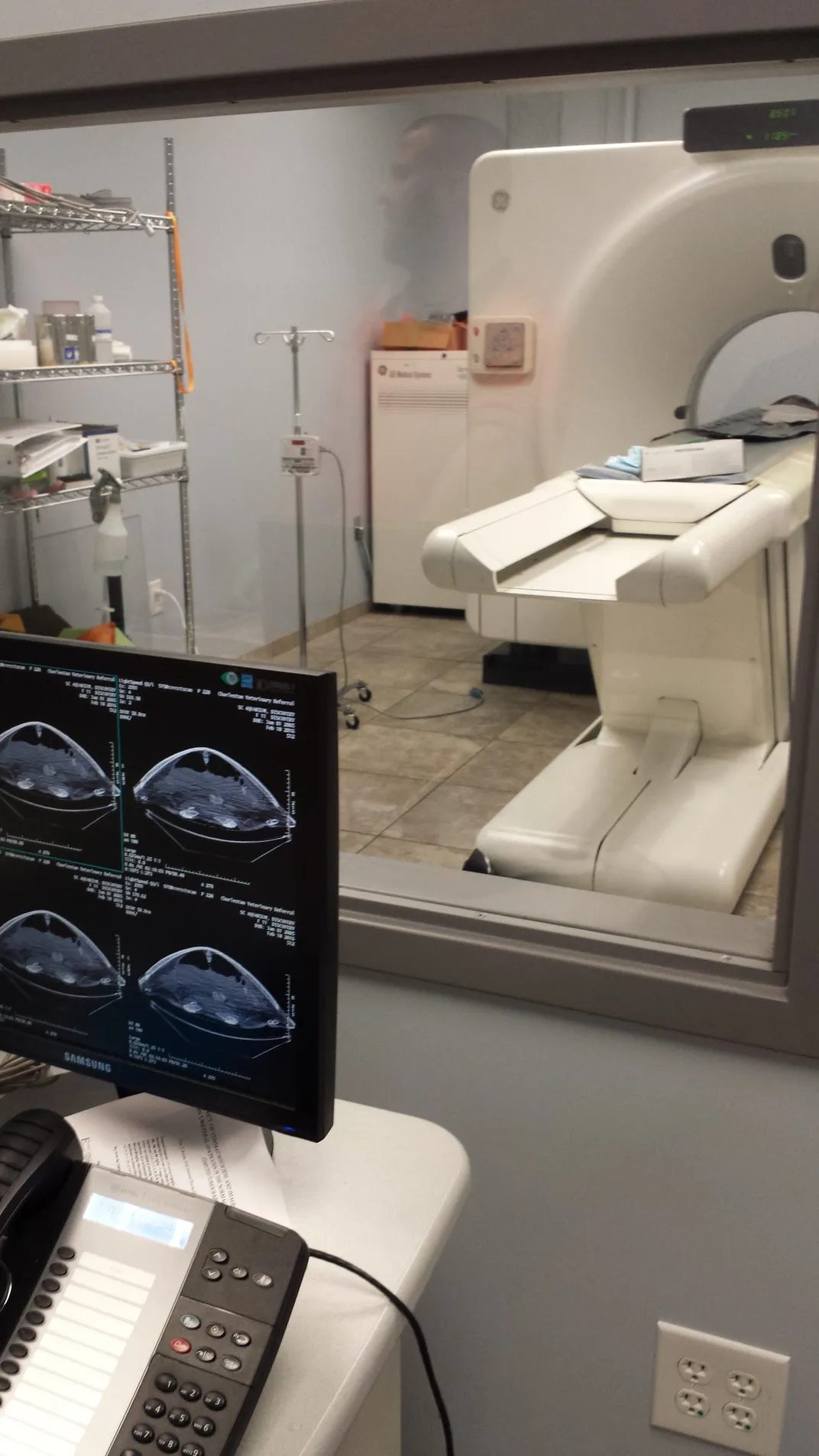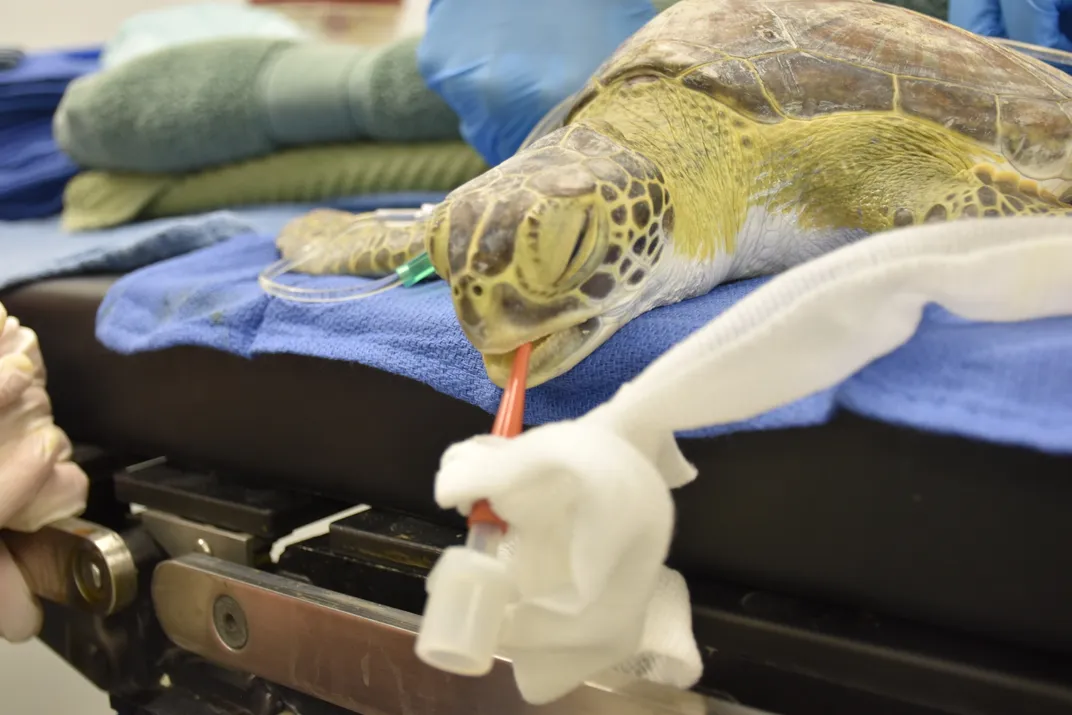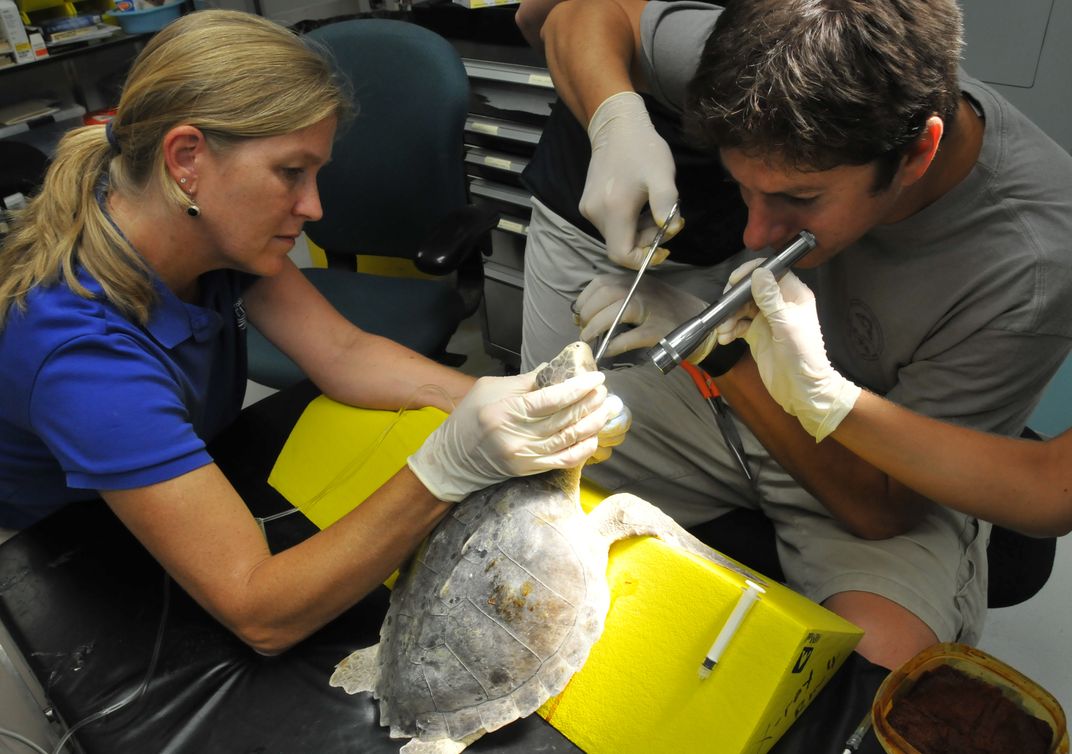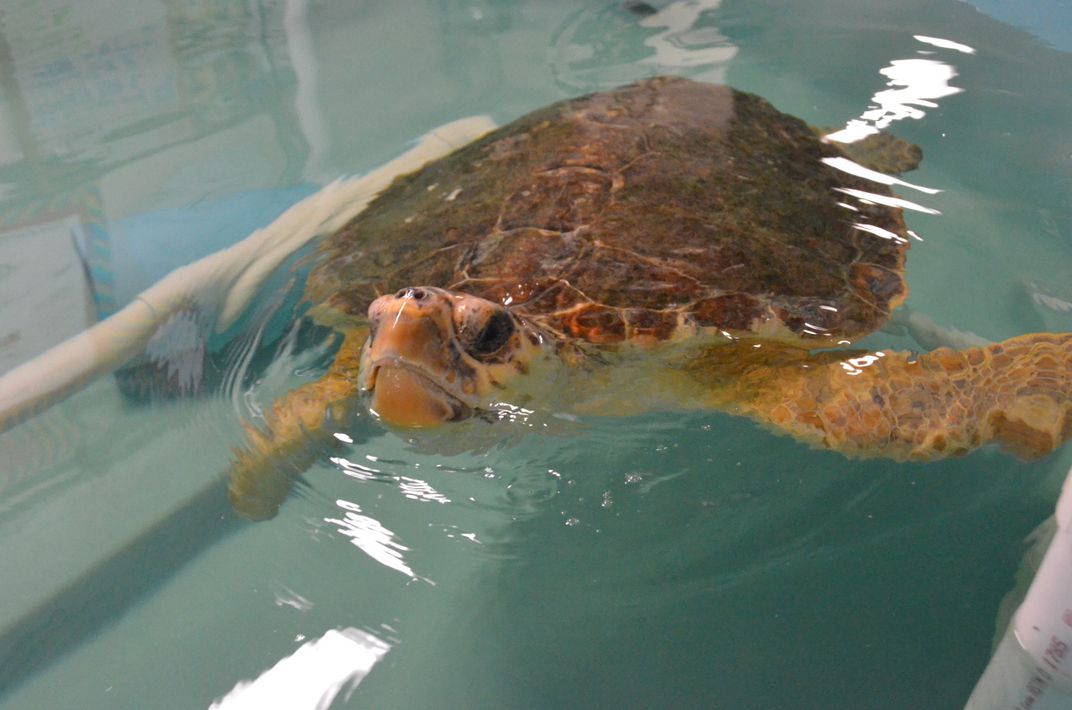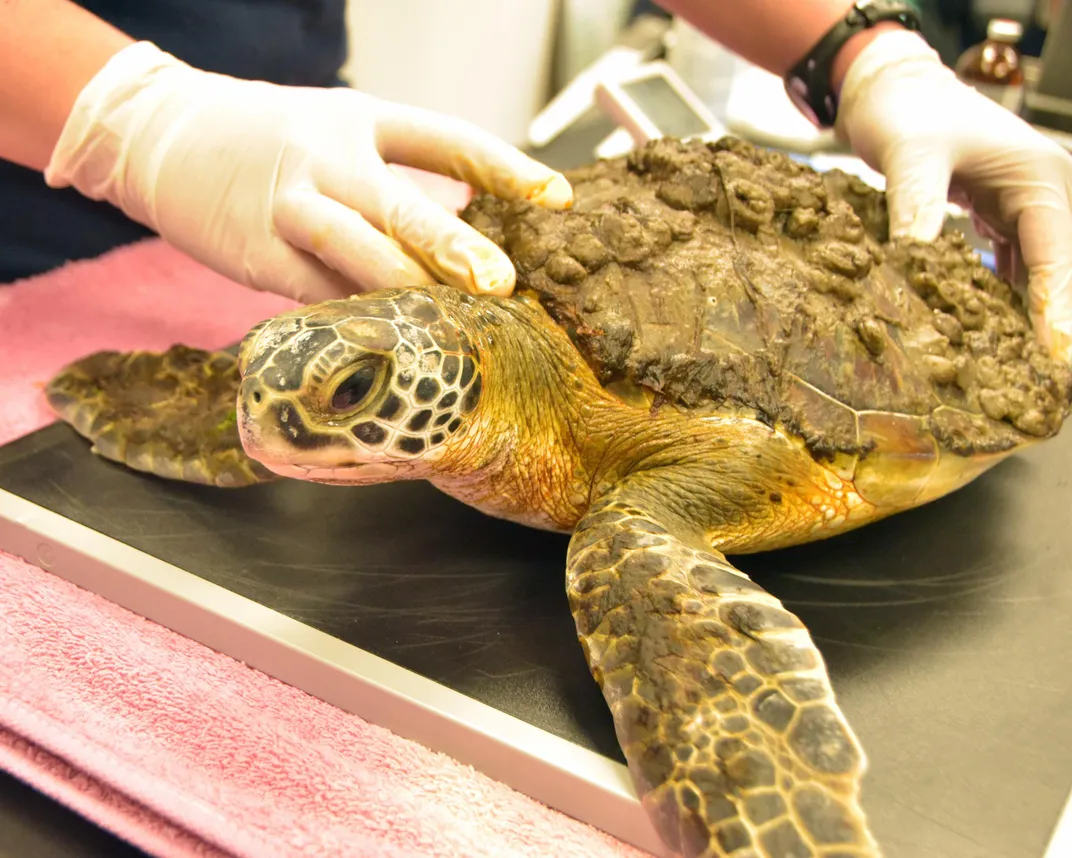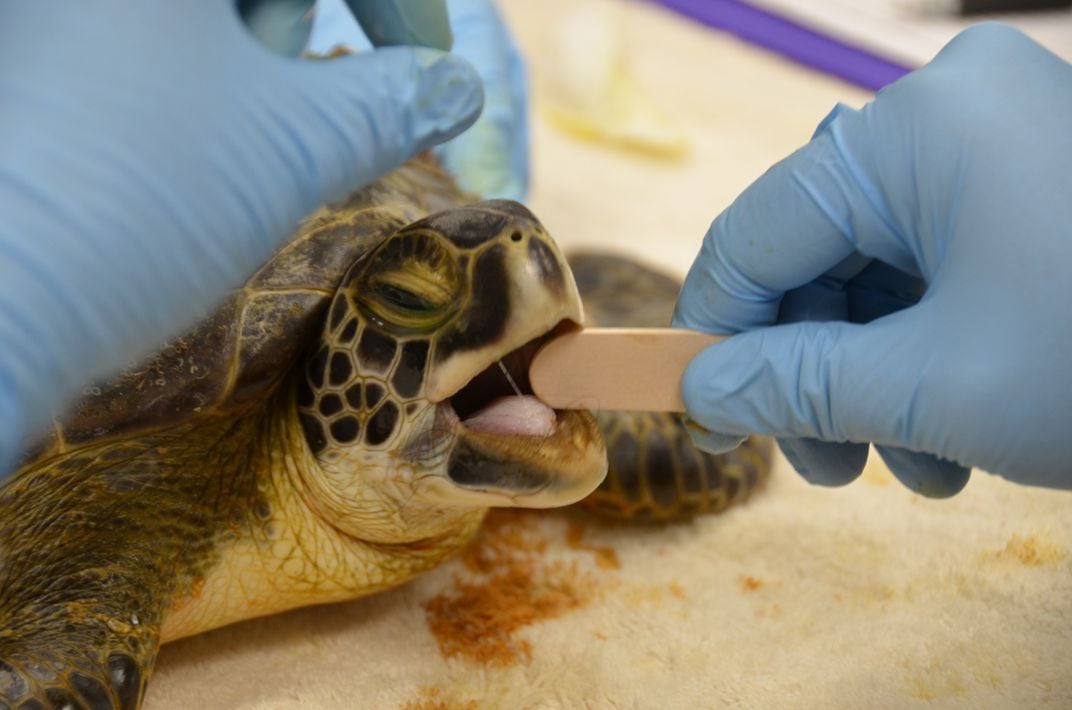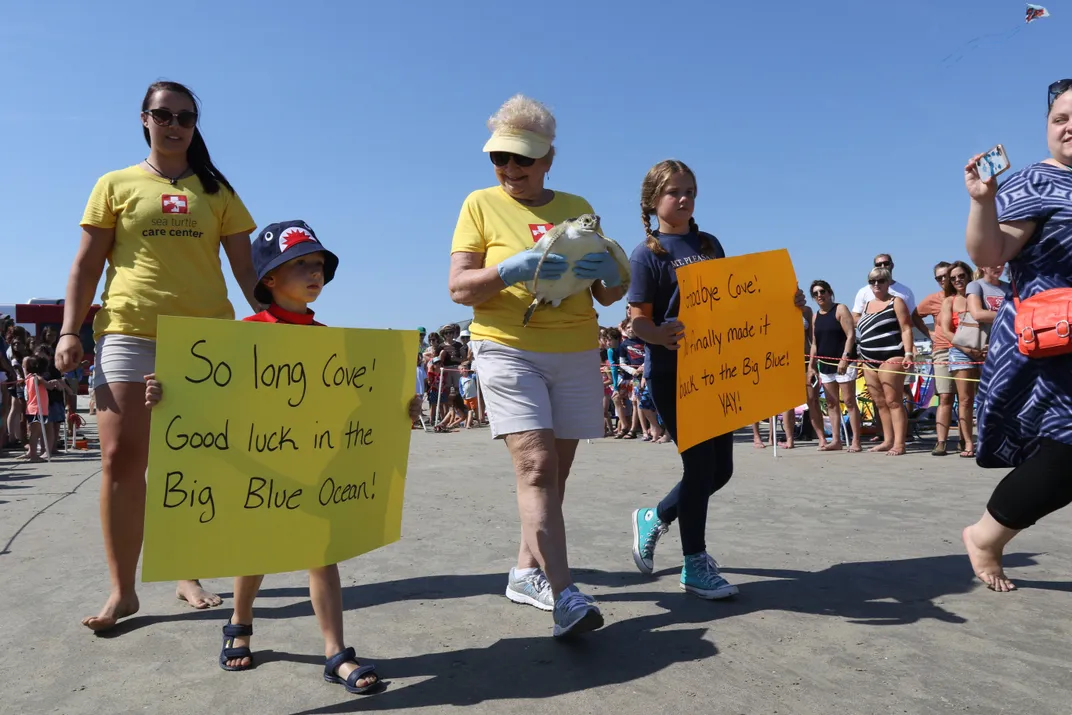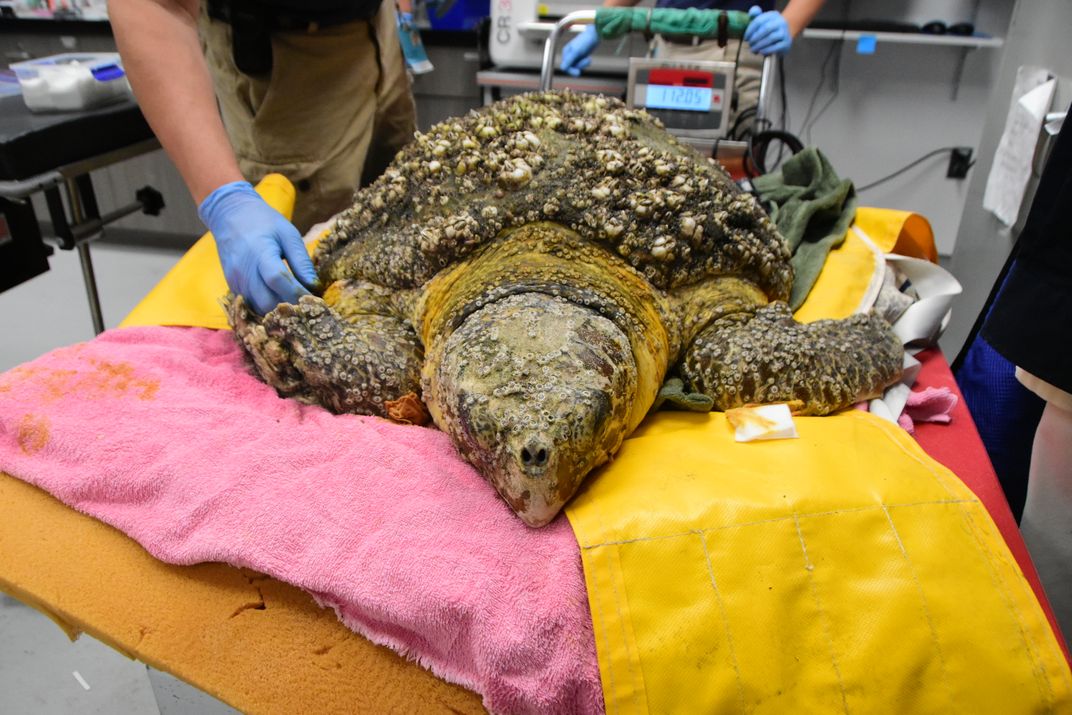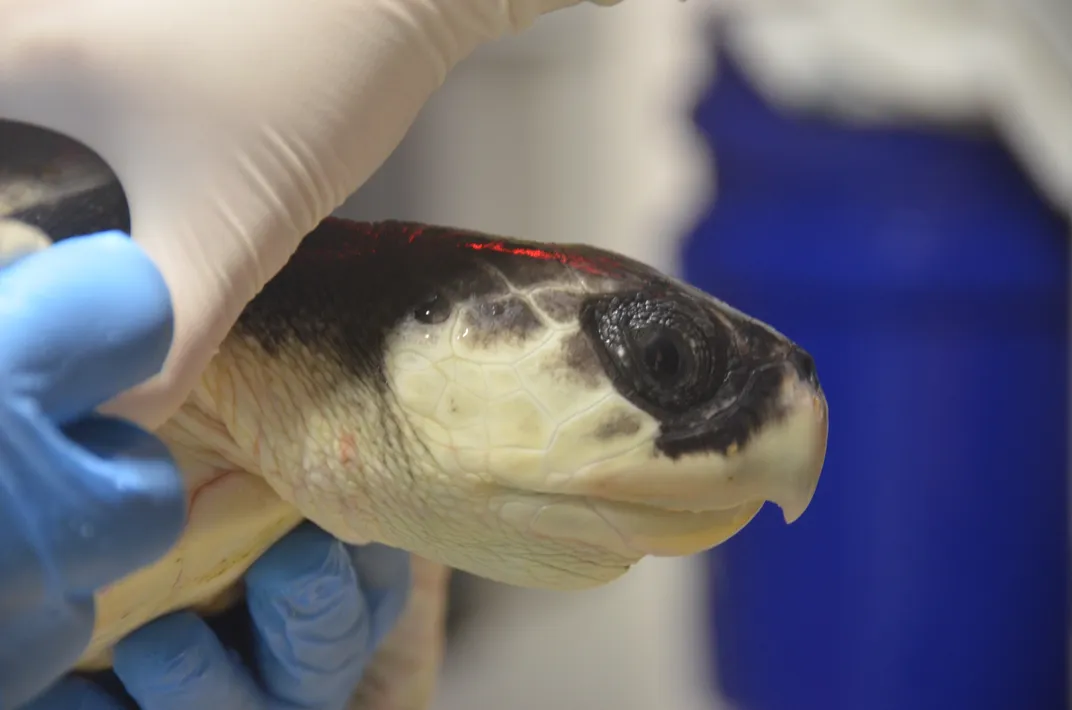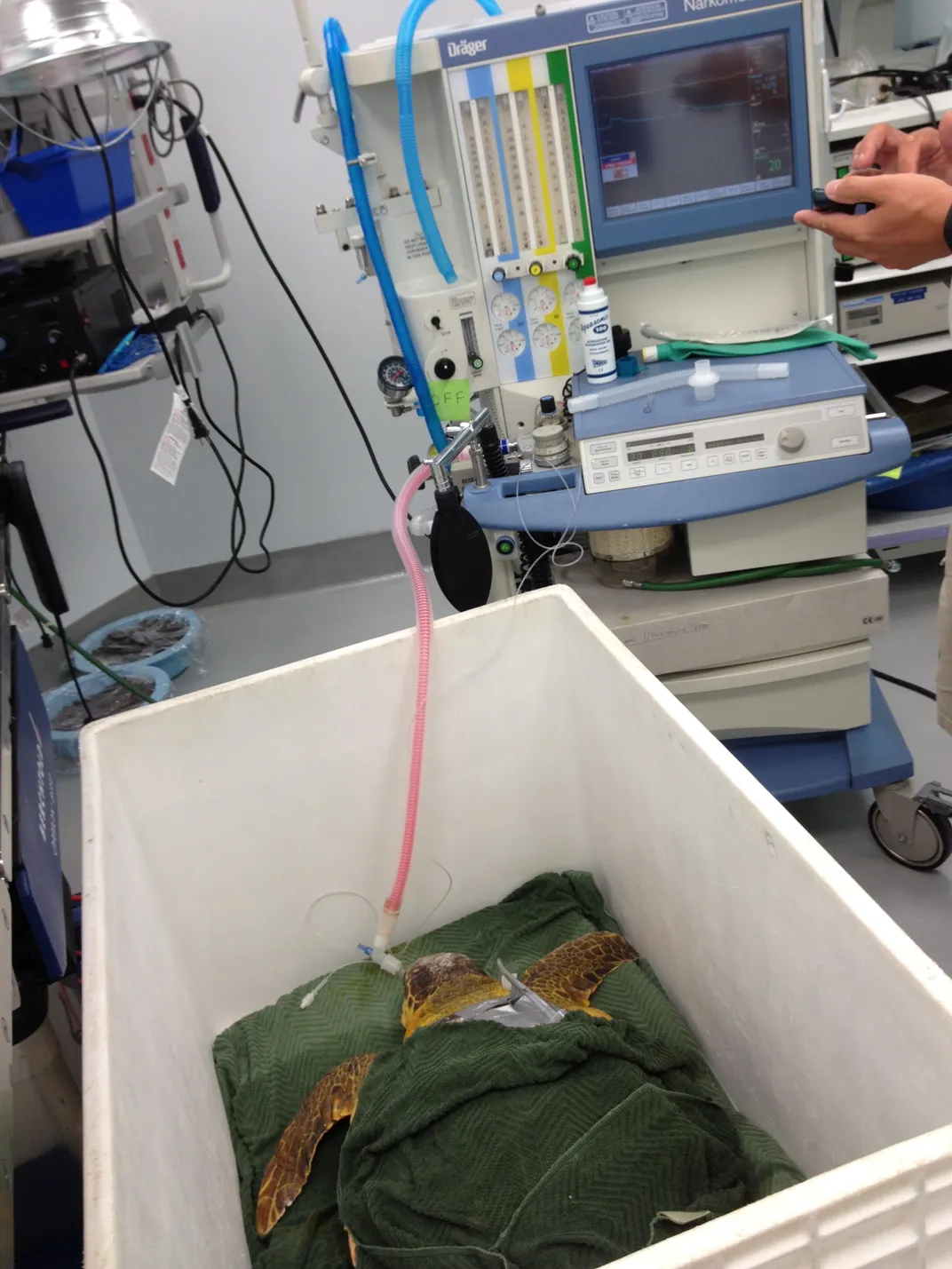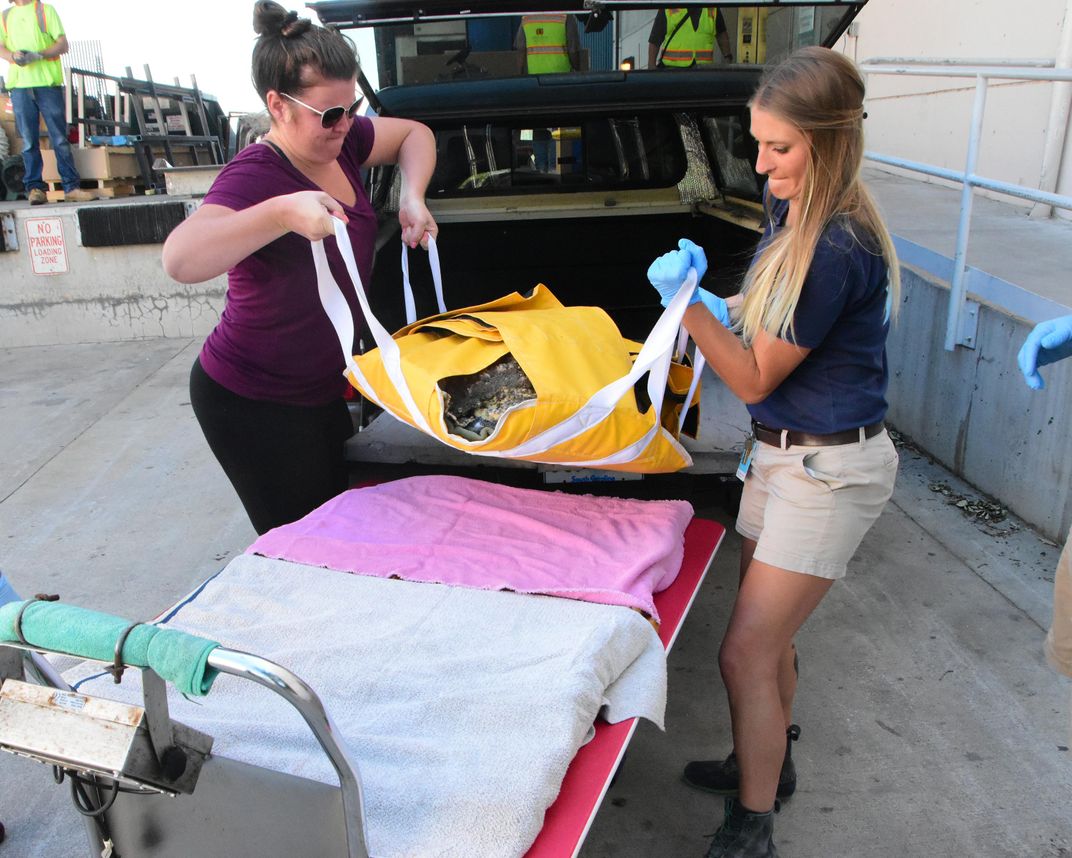A State-of-the-Art Sea Turtle Hospital Welcomes Patients and Visitors in South Carolina
The South Carolina Aquarium invites tourists to visit their reptilian patients, watch surgeries and even conduct mock operations using VR
The South Carolina Aquarium marked an important milestone on May 27, 2017 when it opened the doors to its new Zucker Family Sea Turtle Recovery facility. Located alongside the banks of the Charleston Harbor and housed within the aquarium, the recovery center is a state-of-the-art facility that will serve both as a hospital for sick or injured sea turtles and an educational facility offering the public a glimpse into the rescue, rehabilitation and release of these aquatic reptiles.
Since opening 17 years ago, more than 200 sea turtle patients have passed through the aquarium’s doors—but it didn’t originally set out to become a world-class turtle hospital. In fact, it took the unexpected arrival of one severely dehydrated loggerhead named Stinky to inspire the creation of the aquarium’s current Sea Turtle Care Center, South Carolina’s main hub for sea turtle rehabilitation.
Located inside the building’s basement, the hospital has grown in size over the years, going from a slapdash facility comprised of kiddie pools subbing in for tanks, to a facility equipped with the latest technology to help diagnose and treat patients. However, over the years it became apparent that the hospital was outgrowing its facility, especially if it wanted to involve the community with its mission to help save sea turtles in ways that went beyond simply inviting them to releases back to the ocean.
The new facility significantly expands both the patient and the visitor areas. The new, upgrade tanks nearly double the hospital's previous patient capacity, and can accommodate larger turtles, including adult loggerheads that are known to reach sizes of more than 300 pounds. The new tanks were designed in such a way as to keep turtles’ health and wellbeing at the forefront—meaning tanks are equipped with one-way glass so that visitors can peer in but turtles can’t see them. The glass also lets veterinarians and volunteers do visual examinations of the turtles at all angles, thus minimizing the need for physical human interaction, which can prove stressful to patients. The tanks are also set behind a glass wall to minimize any human disturbances such as tapping on the glass.
“As architects were designing the tanks, we had animal-care experts in the meetings to ensure that the final designs would be best for our patients,” says Kelly Thorvalson, sea turtle rescue program manager. “Each tank will be equipped with a tablet where visitors can swipe through and learn about each patient’s medical situation, what it looked like ... upon admission and more.”
The new facility also gives visitors visual access into an operating room and a CT scan room, where they can see chief veterinarian Shane Boylan and his team working on patients whose injuries can range from boating accidents to entanglements with fishing lines to digesting plastic.
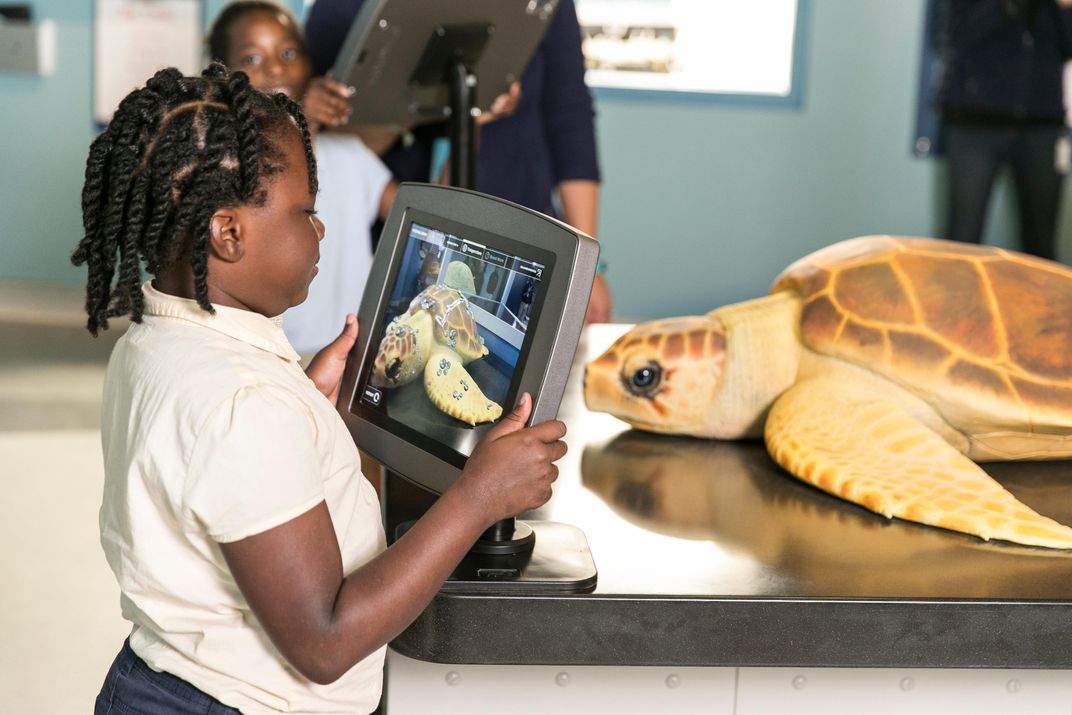
“Just like in a typical hospital, we triage patients,” Boylan says. “This can mean stopping any bleeding, assessing injuries, conducting supportive therapy such as oxygen and administering drugs or vitamins. Nine times out of ten, we can save patients, even those with catastrophic wounds.”
In addition, the new facility features mock medical stations using augmented reality technology where visitors can perform triage steps on mock sea turtle patients, like checking vital signs just as Boylan does. Finally, the new care center features a 40-seat classroom and theater that features daily programs and videos showcasing a sea turtle’s journey from being a patient to his or her return to the ocean.
“Education is a major part of the recovery plan,” Thorvalson says. “[The new facility] will allow us to educate guests in a more powerful and meaningful way.”
